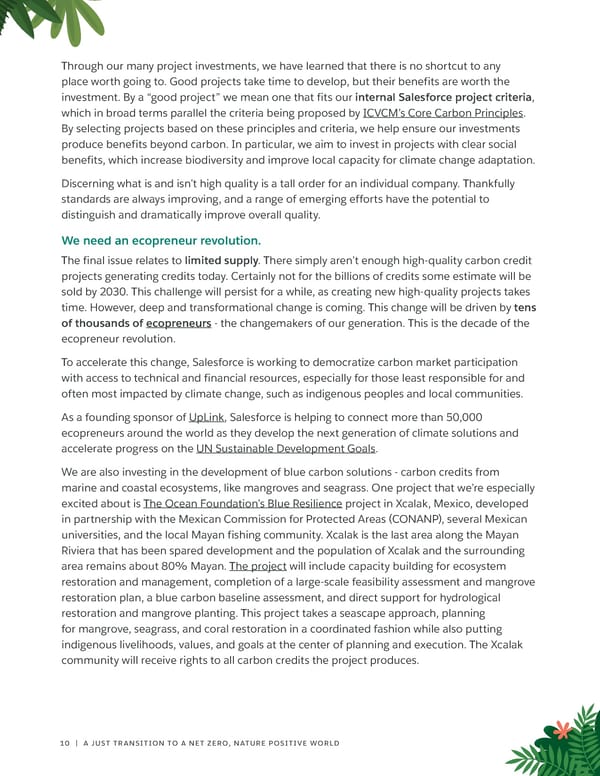Through our many project investments, we have learned that there is no shortcut to any place worth going to. Good projects take time to develop, but their benefits are worth the investment. By a “good project” we mean one that fits our internal Salesforce project criteria, which in broad terms parallel the criteria being proposed by ICVCM’s Core Carbon Principles. By selecting projects based on these principles and criteria, we help ensure our investments produce benefits beyond carbon. In particular, we aim to invest in projects with clear social benefits, which increase biodiversity and improve local capacity for climate change adaptation. Discerning what is and isn’t high quality is a tall order for an individual company. Thankfully standards are always improving, and a range of emerging efforts have the potential to distinguish and dramatically improve overall quality. We need an ecopreneur revolution. The final issue relates to limited supply. There simply aren’t enough high-quality carbon credit projects generating credits today. Certainly not for the billions of credits some estimate will be sold by 2030. This challenge will persist for a while, as creating new high-quality projects takes time. However, deep and transformational change is coming. This change will be driven by tens of thousands of ecopreneurs - the changemakers of our generation. This is the decade of the ecopreneur revolution. To accelerate this change, Salesforce is working to democratize carbon market participation with access to technical and financial resources, especially for those least responsible for and often most impacted by climate change, such as indigenous peoples and local communities. As a founding sponsor of UpLink, Salesforce is helping to connect more than 50,000 ecopreneurs around the world as they develop the next generation of climate solutions and accelerate progress on the UN Sustainable Development Goals. We are also investing in the development of blue carbon solutions - carbon credits from marine and coastal ecosystems, like mangroves and seagrass. One project that we’re especially excited about is The Ocean Foundation’s Blue Resilience project in Xcalak, Mexico, developed in partnership with the Mexican Commission for Protected Areas (CONANP), several Mexican universities, and the local Mayan fishing community. Xcalak is the last area along the Mayan Riviera that has been spared development and the population of Xcalak and the surrounding area remains about 80% Mayan. The project will include capacity building for ecosystem restoration and management, completion of a large-scale feasibility assessment and mangrove restoration plan, a blue carbon baseline assessment, and direct support for hydrological restoration and mangrove planting. This project takes a seascape approach, planning for mangrove, seagrass, and coral restoration in a coordinated fashion while also putting indigenous livelihoods, values, and goals at the center of planning and execution. The Xcalak community will receive rights to all carbon credits the project produces. 10 | A JUST TRANSITION TO A NET ZERO, NATURE POSITIVE WORLD
 Salesforce on Carbon Credits Page 9 Page 11
Salesforce on Carbon Credits Page 9 Page 11